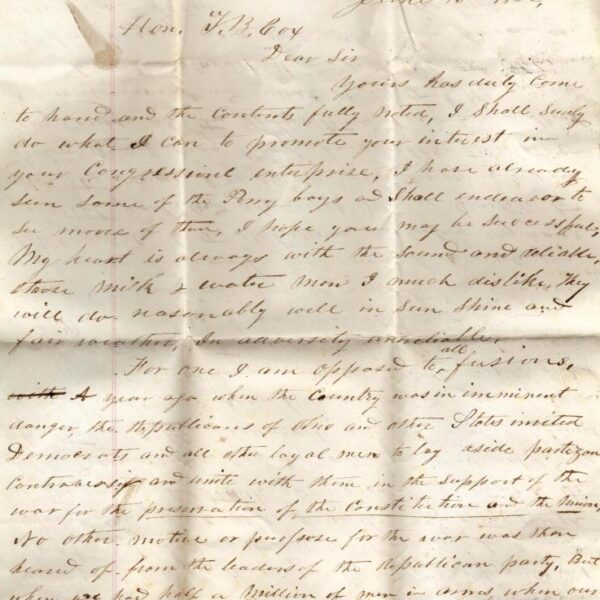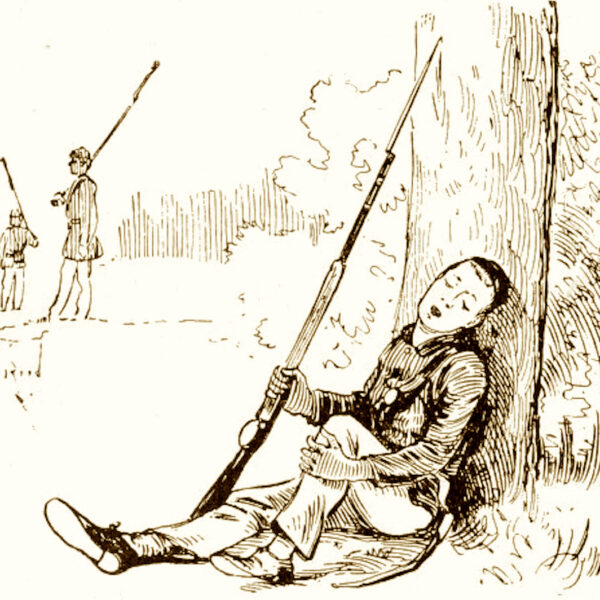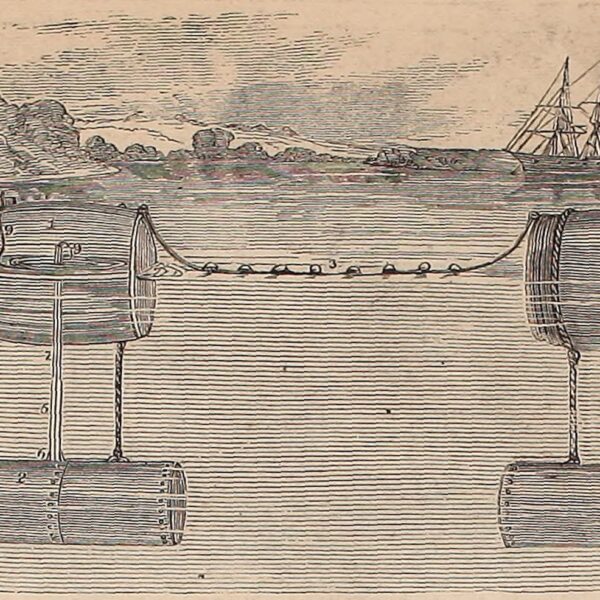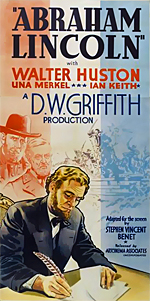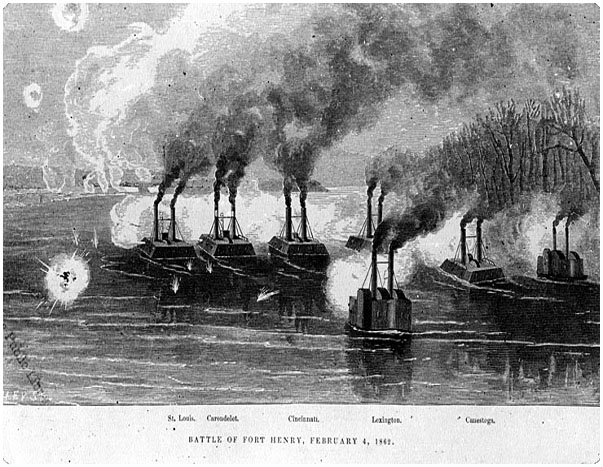
The following is Rear Admiral Henry Walke’s recollection of the Battle of Fort Henry.
…Heavy rains had been falling, and the river had risen rapidly to an unusual height; the swift current brought down an immense quantity of heavy drift-wood, lumber, fences, and large trees, and it required all the steam-power of the Carondelet, with both anchors down, and the most strenuous exertions of the officers and crew, working day and night, to prevent the boat from being dragged down-stream. This adversity appeared to dampen the ardor of our crew, but when the next morning they saw a large number of white objects, which through the fog looked like polar bears, coming down the stream, and ascertained that they were the enemy’s torpedoes forced their moorings by the powerful current, they took heart, regarding the fresher as providential and as a presage of victory. The overflowing river, which opposed our progress, swept away in broad daylight this hidden peril; for if the torpedoes had not been disturbed, or had broken loose at night while we were shoving the drift-wood from our bows, some of them would surely have exploded near or under our vessels.
The 6th dawned mild and cheering, with a light breeze, sufficient to clear away the smoke. At 10:20 the flag-officer made the signal to prepare for battle, and at 10:50 came the order to get under way and steam up to Panther Island, about two miles below Fort Henry. At 11:35, having passed the foot of the island, we formed in line and approached the fort four abreast,-the Essex on the right, then the Cincinnati, Carondelet, and St. Louis. For want of room the last two were interlocked, and remained so during the fight.
As we slowly passing up this narrow stream, not a sound could be heard nor a moving object seen in the dense woods which overhung the dark and swollen river. The gun-crews of the Carondelet stood silent at their posts, impressed with the serious and important character of the service before them. About noon the fort and the Confederate flag came suddenly into view, the barracks, the new earth-works, and the great guns well manned. The captains of our guns were men-of-war’s men, good shots, and had their men well drilled.
The flag-steamer, the Cincinnati, fired the first shot as the signal for the others to begin. At once the fort was ablaze with the flame of her eleven heavy guns. The wild whistle of their rifle-shells was heard on every side of us. On the Carondelet not a word was spoken more than at ordinary drill, except when Matthew Arthur, captain of the starboard bow-gun, asked permission to fire at one or two of the enemy’s retreating vessels, as he could not at that time bring his gun to bear on the fort. He fired one shot, which passed through the upper cabin of a hospital-boat, whose flag was not seen, but injured no one. The Carondelet was struck in about thirty places by the enemy’s heavy shot and shell. Eight struck within two feet of the bow-ports, leading to the boilers, around which barricades had been built-a precaution which I always took before going into action, and which on several occasions prevented an explosion. The Carondelet fired 107 shell and solid shot; none of her officers or crew was killed or wounded.
The firing from the armored vessels was rapid and well sustained from the beginning of the attack, and seemingly accurate, as we could occasionally see the earth thrown in great heaps over the enemy’s guns. Nor was the fire of the Confederates to be dispersed; their heavy shot broke and scattered our iron-plating as if it had been putty, and often passed completely through the casemates. But our old men-of-war’s men, captains of the guns, proud to show their worth in battle, infused life and courage into their worth in battle, infused life and courage not their young comrades. When these experienced gunners saw a shot coming toward a port, they had the coolness and discretion to order their men to bow down, to save their heads.
After nearly an hour’s hard fighting, the captain of the essex, going below, and complimenting the First Division for their splendid execution, asked them if they did not want to rest and give three cheers, which were given with a will…
Source: Walke, Henry, “The Gun-Boats at Belmont and Fort Henry” in Battles and Leaders, Volume 1 (New York : The Century Co., 1887).
Image Credit: Herald-Post photographs collection, University of Louisville (courtesy of the Kentucky Digital Library).
